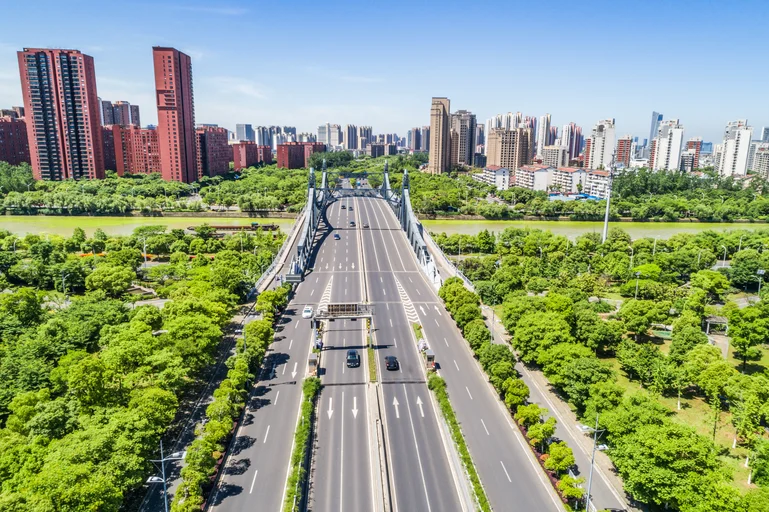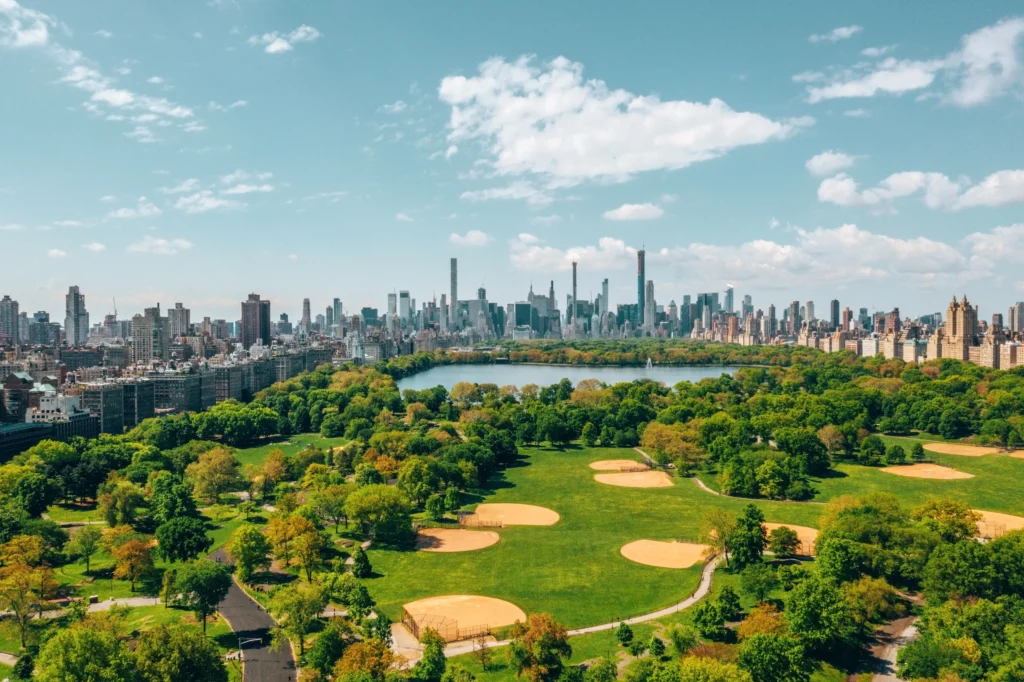
Urban Greening Checklist Grow A Cooler, Greener City
Cities around the world are heating up faster than the planet itself. Concrete, asphalt, and steel trap heat, while air conditioners and vehicles pump out even more. But there’s a powerful and natural solution right within our reach—urban greening. By following an urban greening checklist, communities can turn gray, overheated streets into cooler, greener, and healthier ones.
Urban greening isn’t just about planting trees—it’s about reshaping how we live in cities. By adding parks, rooftop gardens, and green walls, we can make urban spaces more sustainable and enjoyable. Let’s see how cities can become smarter and cooler, one green space at a time.
What Is Urban Gardening?
Urban gardening is the practice of growing plants, vegetables, and trees in city environments—whether it’s on rooftops, balconies, community plots, or roadside strips. It helps residents reconnect with nature, improves air quality, and promotes a sense of community in otherwise crowded spaces.
Modern urban gardening has grown far beyond being just a personal hobby. Today, many cities are adding it to their Urban Greening Checklist, focusing on maximizing greenery even in small spaces. From vertical gardens on high-rises to food-producing rooftops, urban gardening helps balance city ecosystems and supports local food production.
Why Urban Greening Matters More Than Ever
Nearly 70% of the world’s carbon emissions come from urban areas, and as temperatures rise, the need for fresh air, shade, and biodiversity increases. Because of too much concrete and a shortage of trees, the urban heat island effect—where cities get much hotter than neighboring rural areas—is getting worse.
By following an urban greening checklist, cities can naturally reduce the impact of rising temperatures. Green roofs, shade trees, and small pocket parks help cool surfaces, manage stormwater better & cut down on building energy use. Each tree and plant plays a part in creating a healthier, more comfortable urban environment.
Urban Greening Checklist: Simple Steps for a Cooler City

This Urban Greening Checklist will walk you through the best ways to restore nature to your city if you’re ready to make your neighborhood greener. Even small efforts can make a big difference. They help clean the air, cool down streets, and improve overall urban living, creating healthier & more comfortable city spaces for everyone.
1. Start with Local Native Plants
Planting native plants that grow well in your area should always be your first step. They support local wildlife, require less upkeep, and adapt better to the soil and climate of the region in question. The simplest way to begin your urban greening journey is with native plants, which are the cornerstone of a robust urban ecosystem.
2. Add Trees for Shade and Air Quality
The natural air purifiers are trees. Planting trees close to homes, in schoolyards, or along sidewalks improves air quality, lowers energy costs, and provides shade. Every urban greening checklist must include trees because they make a city cooler and cleaner.
3. Green Your Roof or Balcony
Transform unused rooftops and balconies into green havens. Rooftop gardens, terrace farms, or even potted plants help cool buildings and combat the urban heat island effect. Plus, they give residents a calm space to enjoy nature amid the hustle and bustle of city life.
4. Create Community Green Spaces
Work with neighbors or local organizations to develop community gardens or mini-parks. These shared green areas improve mental well-being, promote social interaction, and help educate residents about sustainability. Community-led greening projects build stronger, more connected neighborhoods.
5. Use Water Wisely
Smart watering systems are key to keeping urban green spaces healthy and efficient. Using drip irrigation, collecting rainwater, and planting drought-tolerant plants cuts down on water waste. Every drop saved helps cities stay sustainable, especially during long dry spells.
6. Replace Pavement with Permeable Surfaces
Conventional concrete traps rainfall, causing flooding and heat buildup. Replacing pavements with permeable materials such as eco-bricks or porous tiles allows water to seep into the soil naturally. This helps recharge groundwater and prevents stormwater runoff—a crucial step in urban climate adaptation.
7. Support Green Infrastructure Policies
Encourage your city leaders to invest in green infrastructure—from planting programs and bike lanes to eco-friendly buildings. Public policies play a huge role in expanding urban green zones. When citizens support these initiatives, it drives long-term environmental change.
8. Maintain and Monitor Your Green Space
Greening is an ongoing effort, not a one-time task. Regular maintenance, pruning, and proper waste management keep plants healthy and spaces tidy. Monitoring plant growth and soil health ensures your city’s green projects stay thriving for years.
Benefits of Urban Greening
The impact of greening urban spaces extends far beyond the visual appeal. Here are some of the most important urban greening benefits for both people and the planet:
1. Cooling and Climate Regulation
Green spaces help cities adjust to climate change by reducing air and surface temperatures. Without using as much energy, a single mature tree can provide the same cooling effect as ten air conditioners running for 20 hours a day.
2. Better Air Quality
Plants naturally absorb carbon dioxide and pollutants, cleaning the air for everyone. Urban greenery also helps capture fine dust particles and provides oxygen-rich environments.
3. Improved Mental Health
Being in nature improves mood, lowers anxiety, and promotes exercise. According to studies, residents who live close to green areas report feeling happier and experiencing less stress.
4. Stronger Communities
Community gardens foster interaction and a sense of purpose among locals. These areas frequently develop into secure meeting places that promote social inclusion and sustainability education.
5. Increased Property Value
Green neighborhoods often see higher property demand, cleaner air, and better infrastructure. This makes urban greening a smart investment for both cities and homeowners.
After exploring the wide-ranging benefits of urban greening, one practical and space-saving way to apply these ideas is through terrace farming and rooftop gardens. In many cities, where open ground is limited, rooftops offer the perfect opportunity to grow green without needing extra land.
Terrace Farming & Rooftop Gardens: Best for Urban Greening
Rooftop gardens and terrace farming are clever ways to reintroduce nature into urban areas where there is a shortage of open space due to urbanization. These green areas improve air quality, lower the urban heat island effect, and cool buildings in addition to being aesthetically pleasing. Cities can reduce their carbon footprints and become more self-sufficient by growing fruits, vegetables, or even herbs on rooftops.
If you have a flat roof or balcony, start small by growing low-maintenance plants in containers. Add vertical planters or raised beds to make the most of your space and attract pollinators. Rooftop greenery also boosts insulation, helping reduce energy use for cooling.
Read our detailed guide on the advantages of terrace farming to learn practical steps and maintenance tips for a sustainable setup.
Building a Greener Future, One City at a Time
Urban greening is about changing how cities work, not just how they look. Every tiny action helps to create a healthier urban ecosystem, from controlling stormwater to lowering air pollution to generating cooler microclimates. Residents are contributing to the creation of a future in which nature and cities coexist peacefully when they plant trees, create rooftop gardens, or fund green infrastructure projects.
By following the Urban Greening Checklist, anyone can contribute—whether you’re a homeowner or living in a high-rise. The aim isn’t perfection; it’s steady progress toward cleaner air, cooler streets, and a greener future.
Read more related articles > https://www.climatechallange.com/urban-farming-a-growing-trend-in-malmo-and-beyond/
FAQS
Q1. How can I start urban greening in my own area?
Ans. You can start small by planting native species, creating a rooftop or balcony garden, or joining a community park project. Even a few potted plants can help clean the air and reduce heat around you.
Q2. How to measure urban greening?
Q3. What are the main benefits of urban greening?
Ans. Urban greening improves mental health, cleans the air, manages stormwater, and provides habitats for pollinators. It also makes cities more appealing, raises property values, and supports broader sustainability goals.
Q4. Can terrace farming really help in urban greening?
Ans. Terrace farming and rooftop gardens are some of the most effective urban greening strategies. They transform unused spaces, help cool buildings, support biodiversity, and even allow residents to grow their own food.